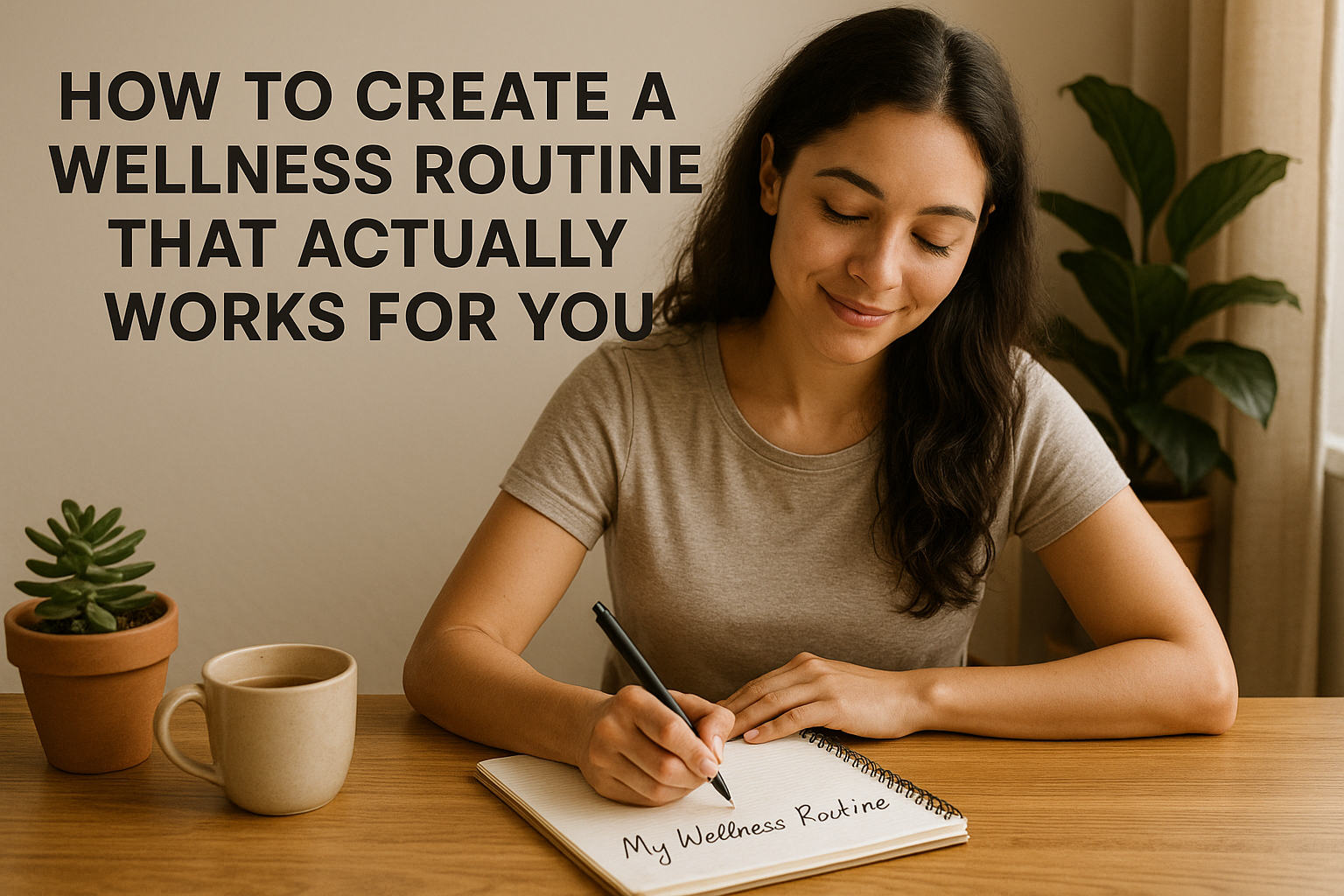A wellness routine isn’t about perfection, endless productivity, or doing what everyone else is doing. It’s about building consistent habits that support your mind, body, and emotional health — in a way that fits your life. When you create a routine based on your unique needs, values, and energy levels, it becomes sustainable. Instead of something you force yourself to do, it becomes something that supports you naturally.
Why Most Wellness Routines Fail
Many people try to adopt routines that are too rigid, complex, or unrealistic. They may copy what influencers or celebrities are doing, without considering their own schedule or lifestyle. When a routine is too demanding or disconnected from your needs, it creates stress — the opposite of wellness. A routine that works is one that’s flexible, enjoyable, and built around what truly helps you feel better.
Step 1: Define What Wellness Means to You
Wellness is personal. For some, it means more energy and better sleep. For others, it means emotional calm or a sense of purpose. Ask yourself:
- What does “feeling well” look like for me?
- What’s missing from my current routine?
- What activities make me feel most alive, grounded, or joyful?
Let your answers guide your routine.
Step 2: Choose a Few Core Pillars
Build your routine around 3–5 essential wellness pillars. These might include:
- Movement: Stretching, walking, yoga, dancing
- Nutrition: Eating more whole foods, staying hydrated
- Mental health: Journaling, therapy, reducing screen time
- Rest: Better sleep, slowing down, tech-free time
- Joy: Hobbies, laughter, creativity
- Connection: Time with loved ones, community, nature
Start small — even 10 minutes per area is enough to create a powerful shift.
Step 3: Design a Simple Daily Flow
You don’t need to fill your entire day with wellness tasks. Focus on three key time blocks:
Morning: Set the tone — maybe it’s meditation, movement, or a nourishing breakfast.
Midday: Reset your energy — go for a walk, breathe deeply, check in with yourself.
Evening: Wind down — journal, unplug, stretch, or reflect on the day.
Use this framework to build consistency without pressure.
Step 4: Make It Flexible
Life is unpredictable. A sustainable wellness routine adapts. If you miss your workout or skip journaling, it’s okay — the point is not perfection, it’s support. Allow your routine to shift with your energy, your schedule, and your needs. Flexibility keeps you committed.
Step 5: Set Reminders and Cues
Build habits by linking them to existing routines. For example:
- Stretch after brushing your teeth
- Drink water before every meal
- Journal right after turning off your computer
Use alarms, sticky notes, or visual cues to help you remember — until it becomes second nature.
Step 6: Track How You Feel, Not Just What You Do
Instead of only checking off tasks, notice the impact. After a week or two, ask:
- What habits make me feel calm or clear?
- What drains me, even if it’s “healthy”?
- What do I want more of?
Tracking your emotional response helps you refine your routine to what actually works.
Step 7: Celebrate the Small Wins
You don’t need huge results to feel proud. Show up. Try again. Rest when needed. Progress in wellness often happens in subtle, internal ways — better sleep, fewer anxious thoughts, more ease in your day. Celebrate those quiet victories.
Step 8: Reassess Regularly
Your needs will evolve — and so should your routine. Reevaluate monthly or seasonally. Ask: What’s still working? What’s no longer serving me? What’s calling for more attention? Let your wellness routine grow with you.
Final Thought: Wellness Is About Wholeness, Not Hustle
You don’t need to earn rest. You don’t need to “optimize” every second. A wellness routine that truly works is one that helps you feel more like yourself — connected, supported, nourished. Choose habits that meet you where you are. Build them slowly, with kindness. That’s how wellness becomes a way of life, not a task on your list.
